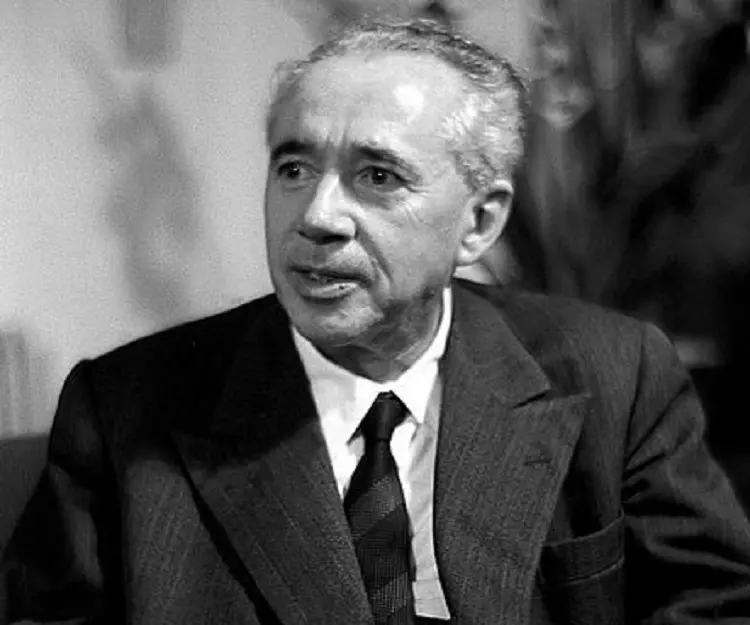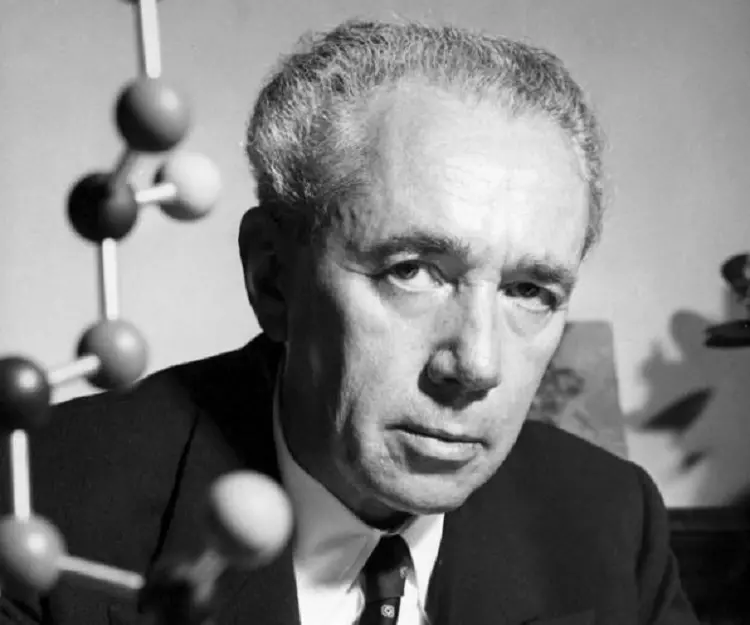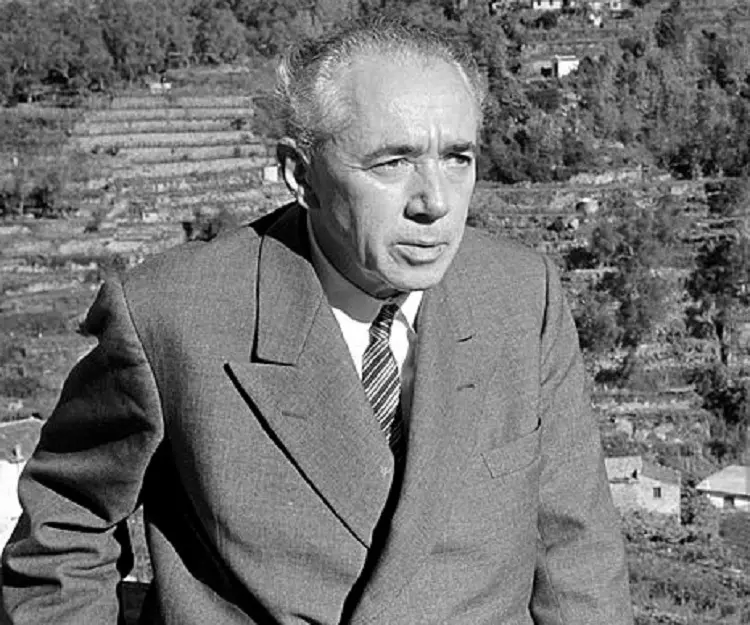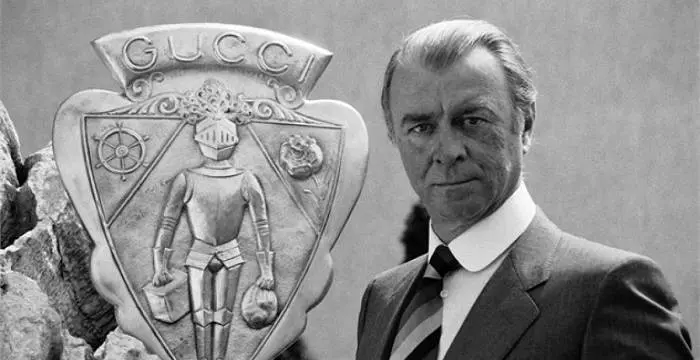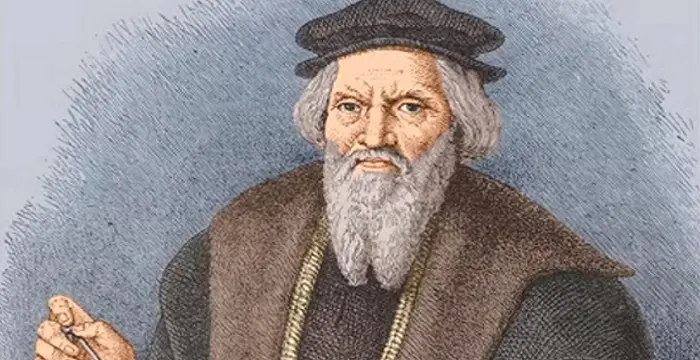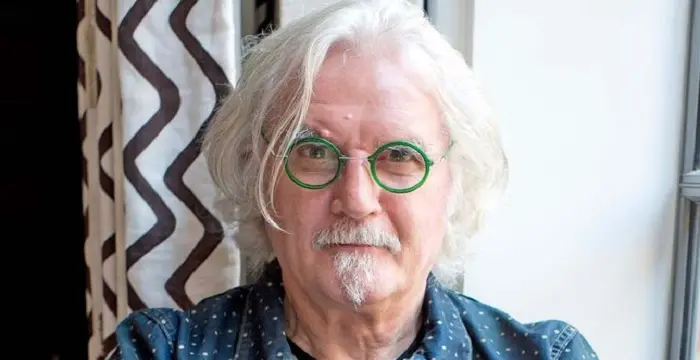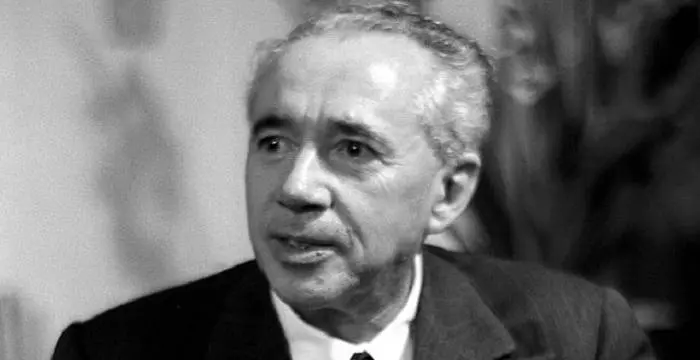
Giulio Natta - Chemists, Birthday and Family
Giulio Natta's Personal Details
Giulio Natta was an Italian chemist who won the 1963 Nobel Prize in Chemistry
| Information | Detail |
|---|---|
| Birthday | February 25, 1903 |
| Died on | May 2, 1979 |
| Nationality | Italian |
| Famous | Scientists, Chemists |
| Birth Place | Imperia, Italy |
| Gender | Male |
| Sun Sign | Pisces |
| Born in | Imperia, Italy |
| Famous as | Chemist |
| Died at Age | 76 |
// Famous Scientists
Juliane Koepcke
Juliane Koepcke is a German-Peruvian biologist, who was the lone survivor among the 92 passengers and crew of the ill-fated LANSA Flight 508 that crashed in the Peruvian rainforest on 24 December 1971. Know more about her life in this biography.
Henry Cavendish
Henry Cavendish was a theoretical chemist and physicist, renowned for discovery of hydrogen and calculation of the mass of earth. To know more about his childhood, profile, timeline and career read on
Konstantin Tsiolkovsky
Konstantin Tsiolkovsky was a Russian rocket scientist and a pioneer of astronautics. This biography provides detailed information about his childhood, family, personal life, career, achievements, etc.
Giulio Natta's photo
Who is Giulio Natta?
Giulio Natta was an Italian chemist, who, along with Karl Ziegler, won the 1963 Nobel Prize in Chemistry, for his work on polymers. Natta developed an interest into experimental chemistry while he was still a school boy. Later, he graduated from the Politecnico di Milano with a BS degree in Chemical Engineering. Three years later, after he had acquired the necessary qualification for teaching, he joined his alma mater as lecturer. Concurrently, he also carried out extensive experimentation and very soon developed an interest in application. His first patent application was filed and granted during this period only. Subsequently, after short stints at Universities of Pavia, Rome and Turin he returned to Politecnico di Milano just before the World War II. His work until now had centered on chemical compounds like methanol, formaldehyde, butyraldehyde, and succinic acid. However, after the Second World War, he began to concentrate mainly on polymers. Later with the financial backings of big Italian companies, he developed new classes of polymers, which brought in a revolution in the Italian industrial scenario. Parallel to his activities as a scientist and an academic, he was also a great inventor. From 1927 to 1970, he filed almost 4000 patents, many of which are of important industrial applications.
// Famous Chemists
Henry Cavendish
Henry Cavendish was a theoretical chemist and physicist, renowned for discovery of hydrogen and calculation of the mass of earth. To know more about his childhood, profile, timeline and career read on
Walter Kohn
Nobel Laureate Walter Kohn was an Austrian-born American theoretical chemist and physicist. Check out this biography to know about his childhood, life, achievements, works & timeline.
Jabir Ibn Hayyan
Jabir Ibn Hayyan was a medieval era polymath. Check out this biography to know about his life, works and achievements.
Childhood & Early Years
Giulio Natta was born on 26 February 1903, in the Porto Maurizio district in Imperia, Italy. His father, Francesco Maria, was a renowned judge and his mother’s name was Elena Crespi.
Giulio had his early education at Colombo High School in Genoa. During his school years, he often carried out noisy experiments in chemistry in the basement of their home and this he enjoyed more than studying his text books. During adolescence, his favorite book was Dante’s ‘Divine Comedy’.
In 1919, Giulio Natta enrolled at the University of Genoa, where he underwent the two-year propaedeutic mathematics course.
In 1921, he enrolled at the Politecnico di Milano, where he underwent practical courses in Industrial Engineering (Chemistry), graduating from there with a BS degree in chemical engineering in 1924.
Concurrently, from 1922, he also studied at the Institute of General Chemistry under Professor Giuseppe Bruni. On graduating from Politecnico di Milano in 1924, he began to work as Bruni’s assistant. His first patent application titled ‘Process for the synthetic preparation of liquid hydrocarbons’, was filed on 12 April 1927 and was later granted..
Career
In 1927, Giulio Natta passed the examination that entitled him to teach and in the same year, he joined Politecnico di Milano as a lecturer (libero docente) of analytical chemistry and remained in that position till 1933. Meanwhile from 1929 to 1933, he also taught a course in Physical Chemistry at the Faculty of Science of the University of Milan.
At the University of Milan, he first started working on the structure of inorganic compounds and industrial catalysts with X-rays. Later in 1932, he studied electron diffraction analysis with Hermann Staudinger at Germany and began to investigate into structure of different solid materials, using both the processes.
Subsequently, he defined the structure of several hydroxides and hydrates. Some time now, he also constructed an ingenious spectrograph for low temperatures and with it he examined the structure of gases that solidify at low temperatures and described them.
His work on this sector led to the installation of an experimental gas generator at the Institute of Industrial Chemistry at the Polytechnic of Milan. The preparation of formaldehyde by means of oxidative dehydrogenation of methanol was another of his important work in 1930s.
In 1933, Natta shifted to the University of Pavia as a full professor of physical chemistry. Concurrently, he also held the position of the Director of the Institute of General Chemistry at the same university.
It was during his stint at the University of Pavia that Natta first started taking especial interest in polymers. By 1934, he had started investigating into its structures.
In 1935, he was appointed as a full professor of general chemistry at the University of Rome. The following years, he shifted to the University of Turin and remained there till 1938.
At that time, the head of the Department of Chemical Engineering at the Politecnico di Milano was Mario Giacomo Levi. When the racial laws against Jews were introduced in fascist Italy, Levi, who was a Jew, was forced to step down and Natta was appointed in his place.
Natta remained at the Polytechnic of Milan from 1938 to 1968 as Full Professor of Industrial Chemistry and concurrently as the Director of the Institute of Applied Chemistry. At the same time, he carried on extensive research on synthesis of rubber.
The League of Nations, formed after the First World War, had imposed sanctions on Italy for invading Ethiopia in 1935. To bypass such sanctions, Italy began to encourage the scientists to work on the synthetic rubber.
Accordingly in 1938, he began to work on the polymerization of olefins and also on the kinetics of its concurrent reactions. Then the World War II set in and the research took a back stage. However, once the war ended Natta resumed his research on polymer with full vigor.
In 1953, Karl Ziegler, working at Max-Planck-Institut fur Kohlenforschung in Germany, developed a catalytic system based on titanium halides and organoaluminium compounds. It allowed the polymerization process to be carried on at room temperature under low pressure.
With financial support from a large Italian company called Montecatini, Natta now took up the project and by extending Ziegler’s experiments he developed new classes of polymers with a sterically ordered structure such as, isotactic, syndiotactic and di-isotactic polymers.
Later, working at Montecatini’s laboratory, he also developed linear non branched olefinic polymers and copolymers with an atactic structure. By X-ray investigations, Prof. Natta had also succeeded in determining the exact arrangement of chains in the lattice of the new crystalline polymers he had discovered.
Apart from being a great scientist, Natta was also a great teacher and had trained innumerable students, who in later years had taken up influential posts in different universities. It is said that he prepared each and every lesson in advance and his commitment to teaching was highly appreciated by his students.
Major Works
Throughout his long career, Professor Giulio Natta had made number of discoveries. In the pre-war period, he worked extensively with methanol, formaldehyde, butyraldehyde, and succinic acid. His researches of this period led to modern industrial syntheses of these chemicals.
His works in late 1920s led the construction of the first Italian methanol plant in 1930. Then, his work on formaldehyde led to the production of new catalysts, suitable for application in industrial scale.
he is best remembered for his work on polymers in the post war period. Starting in 1953, he developed several classes of them; such as isotactic, syndiotactic and di-isotactic polymers and linear non branched olefinic polymers and copolymers etc.
Awards & Achievements
In 1963, Natta received the Nobel Prize in Chemistry for his “discoveries in the field of the chemistry and technology of high polymers”. He shared the prize with Karl Ziegler, who first developed a catalytic system that led to polymerization procedure in room temperature and under normal pressure.
Personal Life & Legacy
In 1935, Natta married Rosita Beati, a woman of great culture and sensitivity. In spite of her humanities background she helped Natta’s careers in many way. The couple had two children; a son named Giuseppe and a daughter named Franca. Rosita died in 1968.
As a person, Natta was very shy and reserved. He also had the rare ability to inspire respect without raising his voice. Instead, he influenced people with love and kindness. He was also fond of outdoor life and loved nature. He often went out on fishing or skiing trips. He also liked to go on long walks.
Natta developed Parkinson’s diseases in 1956 and by 1963 it became so bad that he needed assistance to present his speeches. Finally, he retired from the Polytechnic of Milan in 1968, thus ending almost four decades of glorious scientific career.
He died on 2 May 1979, in Bergamo, Italy, at the age of 76.
Ziegler-Natta catalysts are a group of catalysts used in the synthesis of polymers of 1-alkenes (alpha-olefins). They have been named after Giullo Natta and Karl Ziegler. The catalyst has been used in the commercial manufacture of various polyolefins since 1956.
Trivia
Natta’s wife Rosita Beati was a graduate in literature. It was she who named the polymers discovered by Natta as ‘isotactic’, ‘atactic’ and ‘syndiotactic’.
// Famous Italian peoples
Pietro Boselli
Pietro Boselli is an Italian model, engineer, teacher, and fitness athlete who became famous as the ‘world’s sexiest math teacher’. Check out this biography to know about his birthday, childhood, family life, achievements and fun facts about him.
Guccio Gucci
Guccio Gucci was a famous fashion designer from Florence, Italy, and the founder of the world-renowned fashion brand ‘Gucci.’ Check out this biography to know about his childhood, family, personal life, career, etc.
John Cabot
John Cabot was an Italian navigator and explorer who was the first European to discover the coast of North America. Check out this biography to know about his childhood, life, and achievements.
Giulio Natta's awards
| Year | Name | Award |
|---|---|---|
Other | ||
| 0 | 1963 - Nobel Prize in Chemistry | |
| 0 | Lomonosov Gold Medal | |
Giulio Natta biography timelines
- // 26th Feb 1903Giulio Natta was born on 26 February 1903, in the Porto Maurizio district in Imperia, Italy. His father, Francesco Maria, was a renowned judge and his mother’s name was Elena Crespi.
- // 1919In 1919, Giulio Natta enrolled at the University of Genoa, where he underwent the two-year propaedeutic mathematics course.
- // 1921 To 1924In 1921, he enrolled at the Politecnico di Milano, where he underwent practical courses in Industrial Engineering (Chemistry), graduating from there with a BS degree in chemical engineering in 1924.
- // 1930His works in late 1920s led the construction of the first Italian methanol plant in 1930. Then, his work on formaldehyde led to the production of new catalysts, suitable for application in industrial scale.
- // 1932At the University of Milan, he first started working on the structure of inorganic compounds and industrial catalysts with X-rays. Later in 1932, he studied electron diffraction analysis with Hermann Staudinger at Germany and began to investigate into structure of different solid materials, using both the processes.
- // 1933In 1933, Natta shifted to the University of Pavia as a full professor of physical chemistry. Concurrently, he also held the position of the Director of the Institute of General Chemistry at the same university.
- // 1934It was during his stint at the University of Pavia that Natta first started taking especial interest in polymers. By 1934, he had started investigating into its structures.
- // 1935 To 1938In 1935, he was appointed as a full professor of general chemistry at the University of Rome. The following years, he shifted to the University of Turin and remained there till 1938.
- // 1935The League of Nations, formed after the First World War, had imposed sanctions on Italy for invading Ethiopia in 1935. To bypass such sanctions, Italy began to encourage the scientists to work on the synthetic rubber.
- // 1935 To 1968In 1935, Natta married Rosita Beati, a woman of great culture and sensitivity. In spite of her humanities background she helped Natta’s careers in many way. The couple had two children; a son named Giuseppe and a daughter named Franca. Rosita died in 1968.
- // 1938 To 1968Natta remained at the Polytechnic of Milan from 1938 to 1968 as Full Professor of Industrial Chemistry and concurrently as the Director of the Institute of Applied Chemistry. At the same time, he carried on extensive research on synthesis of rubber.
- // 1938Accordingly in 1938, he began to work on the polymerization of olefins and also on the kinetics of its concurrent reactions. Then the World War II set in and the research took a back stage. However, once the war ended Natta resumed his research on polymer with full vigor.
- // 1953In 1953, Karl Ziegler, working at Max-Planck-Institut fur Kohlenforschung in Germany, developed a catalytic system based on titanium halides and organoaluminium compounds. It allowed the polymerization process to be carried on at room temperature under low pressure.
- // 1953he is best remembered for his work on polymers in the post war period. Starting in 1953, he developed several classes of them; such as isotactic, syndiotactic and di-isotactic polymers and linear non branched olefinic polymers and copolymers etc.
- // 1956Ziegler-Natta catalysts are a group of catalysts used in the synthesis of polymers of 1-alkenes (alpha-olefins). They have been named after Giullo Natta and Karl Ziegler. The catalyst has been used in the commercial manufacture of various polyolefins since 1956.
- // 2nd May 1979He died on 2 May 1979, in Bergamo, Italy, at the age of 76.
// Famous Parkinson's Disease peoples
Muhammad Ali
Muhammad Ali was a legendary boxer who became the first and only three-time lineal World Heavyweight Champion. This biography provides detailed information about his childhood, life, boxing career, achievements & timeline.
Roger Bannister
Roger Bannister is an English doctor, academic and a former athlete. Check out this biography to get detailed information on his childhood, life, career, achievements and timeline.
Robin Williams
Robin Williams was an American actor best known for his performance in the movie ‘Good Will Hunting’. This biography of Robin Williams provides detailed information about his childhood, life, achievements, works & timeline.
Billy Connolly
Billy Connolly is a Scottish actor, musician and stand-up comedian. Check out this biography to know about his childhood, family life, achievements and fun facts about his
Linda Ronstadt
Linda Maria Ronstadt is an American popular singer and songwriter who has earned 11 Grammy Awards. This biography profiles her childhood, life, music career, achievements and timeline.
Howard Cosell
One of the greatest television stars of all time and known for his arrogant and witty personality, Howard Cosell was an American sports journalist. Check out this biography to get detailed information on his life.
Giulio Natta's FAQ
What is Giulio Natta birthday?
Giulio Natta was born at 1903-02-25
When was Giulio Natta died?
Giulio Natta was died at 1979-05-02
Which age was Giulio Natta died?
Giulio Natta was died at age 76
Where is Giulio Natta's birth place?
Giulio Natta was born in Imperia, Italy
What is Giulio Natta nationalities?
Giulio Natta's nationalities is Italian
What is Giulio Natta's sun sign?
Giulio Natta is Pisces
How famous is Giulio Natta?
Giulio Natta is famouse as Chemist



